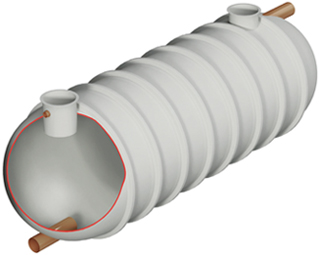Fatbergs are a growing problem for sewer systems, particularly in big cities, as ageing infrastructure struggles to keep up with present day demand. They are a grim consequence of modern living as many don’t consider where things go once flushed or washed away, taking for granted that modern plumbing just works. As more and more fatbergs are unearthed in the sewer systems beneath our feet, we have to face the reality that what we put down the drains in homes and businesses across the country can have rather ghastly effects. So, let’s delve a little deeper into the fatberg problem.
What exactly is a fatberg?
The name itself – ‘fatberg’ – conjures a pretty negative image of hulking masses blocking huge sections of sewer systems, and this is a pretty accurate depiction. Fatbergs are made up from non-biodegradable items – for example, wet wipes, nappies, sanitary towels and condoms – which get stuck to congealed grease, oil and fat. The grease, oils and fats, which largely come from cooking, stick to the sewer walls and catch wet wipes etc. as they travel through the pipes, eventually building up into an ugly, putrid mass. What’s more, over time the grease, oils and fats can solidify, becoming as strong as concrete – this makes it hard for the sewers to operate and for the mass to be cleared.

What are the effects of fatbergs?
The effects of fatbergs can be severe if they aren’t discovered in good time. As the mass grows, picking up more and more non-biodegradable items, the capacity of the pipes will reduce, slowing down the sewer flow. The bigger the fatberg grows, the easier it will be to collect more waste and so they can quickly grow into colossal obstructions. For the properties above ground, slower sewers can mean slow draining fixtures as well as foul smells from your drains.
If the sewer becomes entirely blocked or close to fully obstructed, the repercussions can be disastrous. Sewage backups can be very unpleasant and render sinks, toilets and showers unusable. Furthermore, the blockage and backing up sewage can create a buildup of pressure which can cause pipes to rupture and spill raw sewage which can even find its way into the street and properties above.
If a fatberg starts forming in a sewer, it is vital that it is cleared as soon as possible. The clear such a mass, a lot of manpower and industrial strength equipment is needed which makes this is a costly problem to fix. As an example, in London, the large population and Victorian sewers system combine to create a perfect storm for fatbergs. As such, Thames Water estimate they spend around £1 million every month clearing blockages in sewers.
How can fatbergs be prevented?
The incredible thing about fatbergs is that they are entirely preventable. Simply, they are the result of waste accumulating which should never have been be poured or flushed away. So, you can actually help to prevent fatbergs occurring simply by being conscious of what you flush away. For businesses, particularly in commercial kitchens, installing grease traps on sinks can be a great way to help. On an individual level, follow the advice of water companies: if it’s not pee, poo or toilet paper, don’t flush it.
Wildon UK are wastewater experts, helping customers throughout the UK with sewage treatment. Our team of experienced and highly trained engineers can offer reliable installations, maintenance and repair work for a large variety of sewage systems. If you have any enquiries, get in touch with our team of experts today who will be more than happy to help.
Go back to








